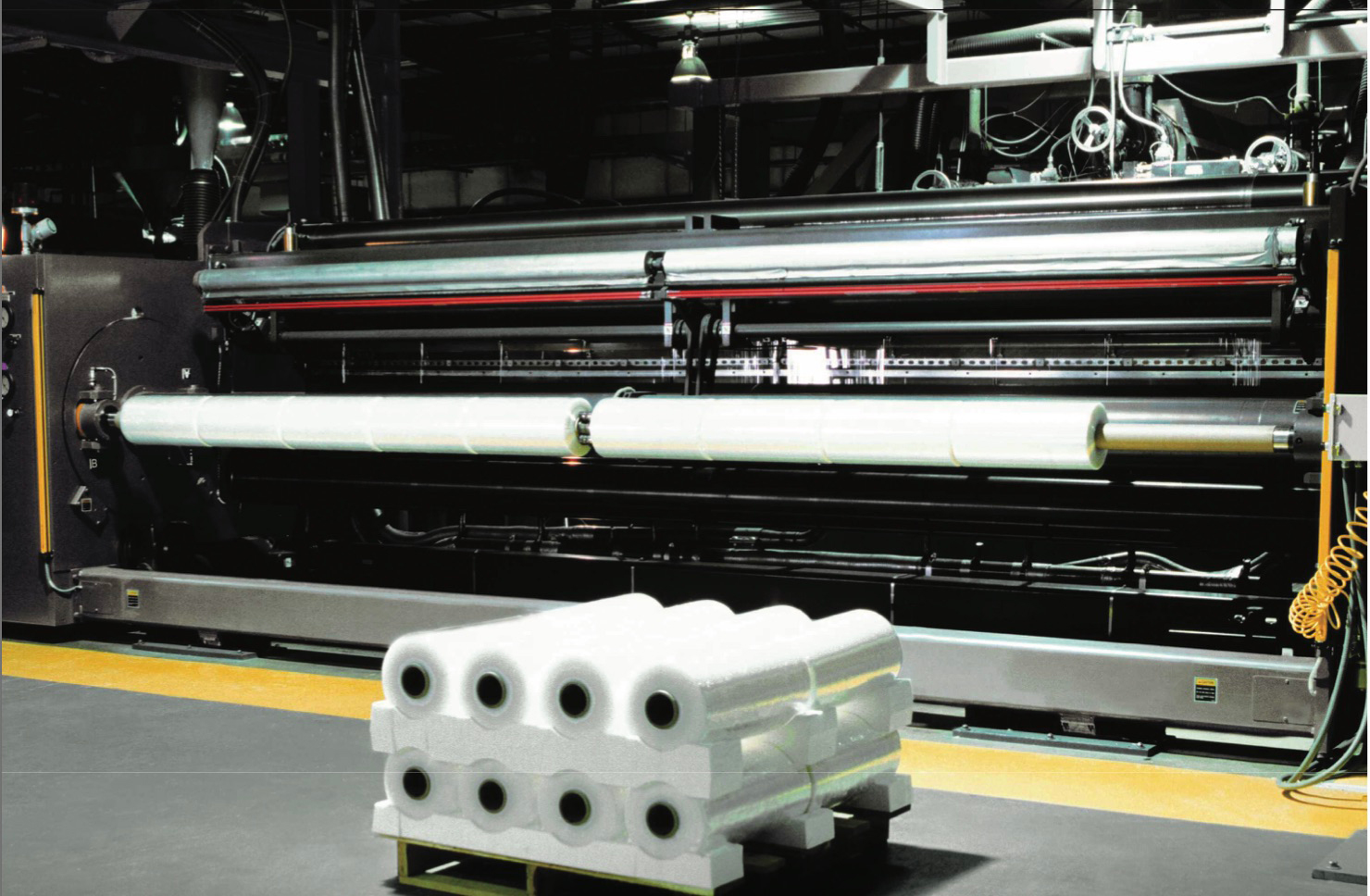Pros and Cons of In-line Slitting
- Published: April 18, 2022
By Duane Smith, Process Manager – Web Handing and Specialty Winding, Davis-Standard
 Producing quality, shippable rolls directly off your production line can increase productivity, lower manufacturing costs, decrease scrap and shorten production cycles.
Producing quality, shippable rolls directly off your production line can increase productivity, lower manufacturing costs, decrease scrap and shorten production cycles.
By eliminating an off-line slitting and rewinding operation, you can potentially save 5 and 10 cents per pound in production costs.
However, in order to take advantage of the pros (productivity and profitability) offered by in-line slitting, the right mix of products and equipment is essential. The industry trend of wider and faster production lines makes this more challenging.
Extensible films wound to smaller diameters such as stretch wrap and food wrap films have traditionally been slit in-line. But, as the widths and speeds of these lines have increased, the consistent achievement of scrapless roll changes as well as the finished roll removal and re-coring process, places unique demands on equipment. This can lead to several cons including lost production, increased production costs and more scrap. In order to succeed, there are six key requirements for a profitable in-line slitting operation.
Consistent quality on the process: Process quality of the material being produced must be consistent. Cutting off quality material from 12 slit rolls instead of one parent roll can significantly drive up production costs. Automated process control systems have substantially reduced off-quality process problems.
Changeover time for slit-width changes for roll removal and shaft re-coring: Automated slitter positioning systems and roll/re-coring systems make it possible to achieve fast and efficient set-width changes, roll changes and re-coring. However, downtime and/or scrap can be a negative when making product width changes or when slitter blade maintenance is required.
Ability to consistently spread and wind shippable quality rolls: The winder must have a properly designed slit web spreading system and the ability to use all three of the TNT (Tension/Nip/Torque) winding principles to consistently produce properly wound rolls. This includes the ability to wind on differential shafts for materials with cross-machine thickness variations, which need to be wound to larger diameters.
High quality, high-speed transfers and good starts on new cores with 100 percent consistency: New transfer systems produce straight-line cuts and transfer the slit web directly to the new cores. Stationary knife transfer concepts provide roll change consistency approaching 100 percent, regardless of web width or operation speed. They also provide clean web starts on new cores.
Scrap generation during the roll change operation: Quality rolls call for the first and last wraps to be as good as those in-between. Controlled tension, nip and torque must be maintained throughout the entire winding cycle, including the roll change.
Core size consideration: As production lines increase in width and speed, the core shaft critical speed and deflection criteria determine the minimum core ID (inside diameter) that your material can be wound on. Just by taking a single-center slit, the stiffness of the roll no longer contributes to the stiffness of the shaft. Off-line slitting and rewinding is still needed for customers with small core sizes.
These guidelines may help you determine if in-line slitting is the right process for your operation.












